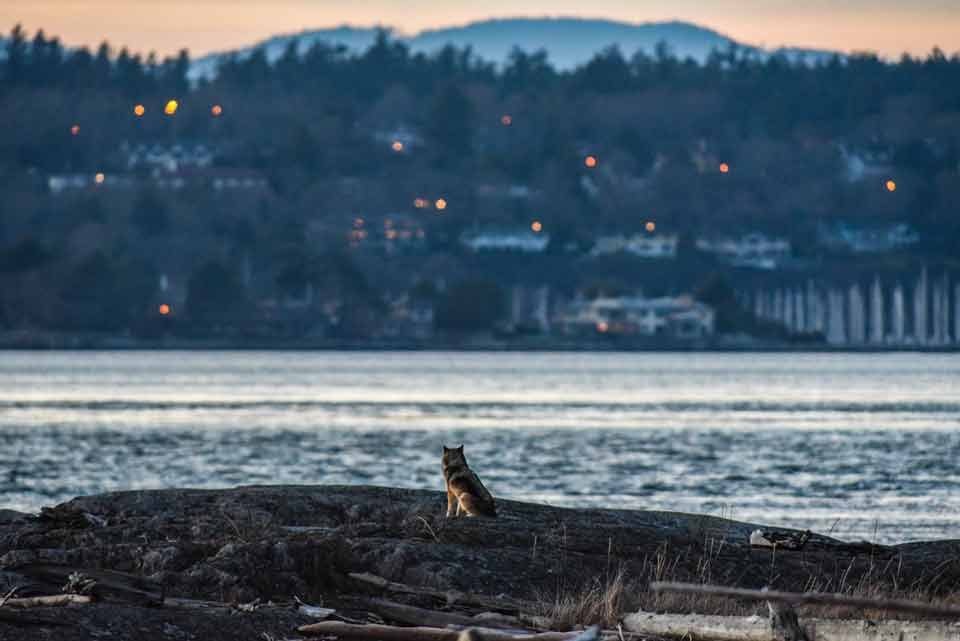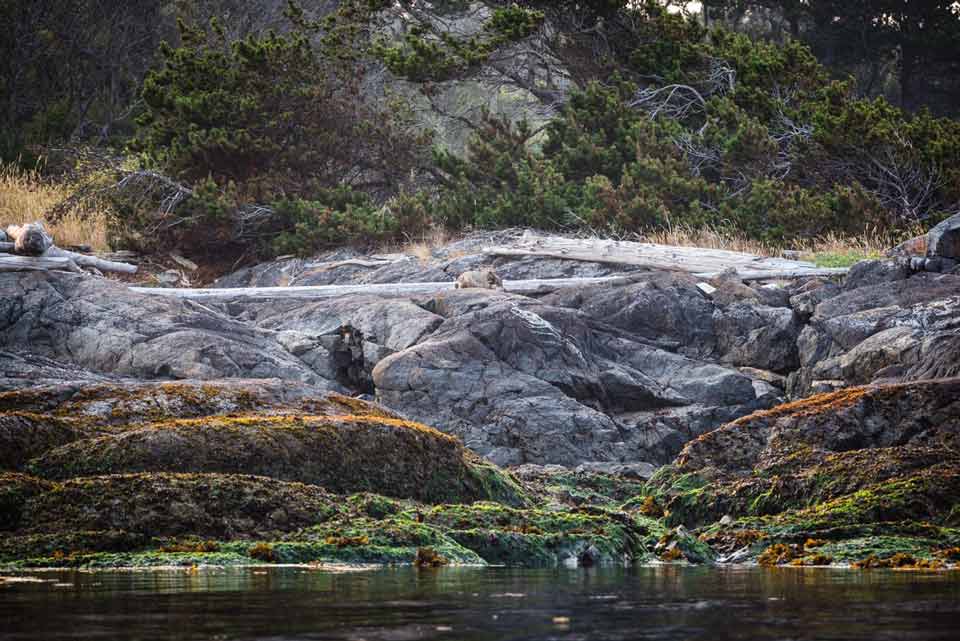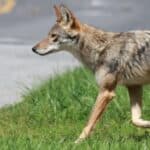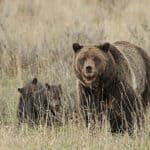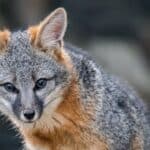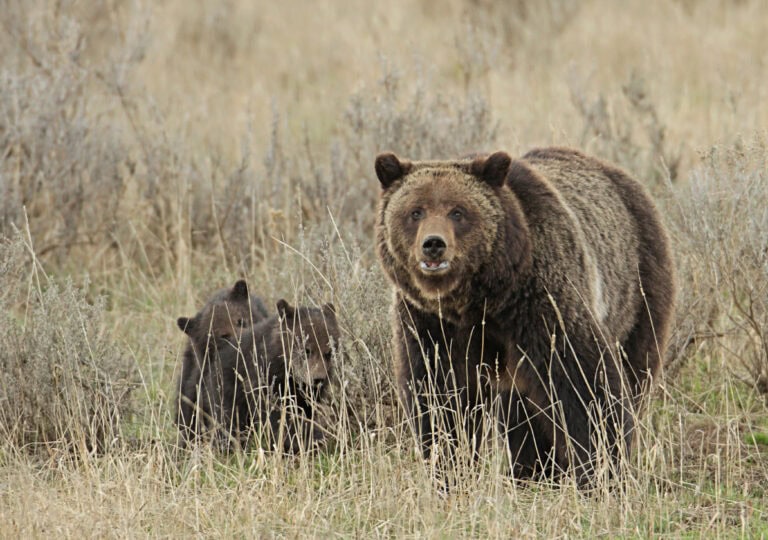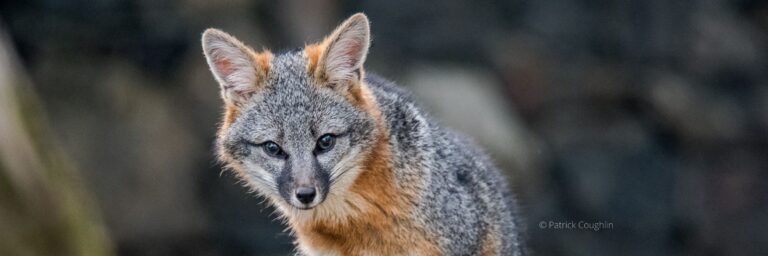As I reflect on my time at the Jackson Hole Wildlife Film Festival promoting our new film KILLING GAMES ~ Wildlife In The Crosshairs with my friend and colleague, conservation photographer Cheryl Alexander, I’m excited to share our recent interview with her.
I had the great pleasure of joining Cheryl and Project Coyote Science Advisory Board Member Dr. Bob Crabtree on a boat trip out to a small group of uninhabited islands near Vancouver Island, British Columbia. We were in search of Takaya, a lone grey coastal wolf that Cheryl has come to know intimately over the past three-and-a-half-years. While Cheryl worked hard to keep Takaya’s story out of the public eye for fear of retribution against the wolf, sensationalized media coverage of Takaya in 2016 resulted in unwarranted claims of Takaya’s dangerousness (more about this below). After Takaya’s whereabouts were made public, Cheryl realized the best thing she could do for the lone wolf would be to tell his story and garner support for his protection.
Our knowledge is still relatively nascent about the unique behaviors and diet of these coastal wolves that some refer to as “sea wolves.” As you’ll read below, Takaya’s story is compelling. Cheryl is working on a film and a book chronicling her observations Takaya that will help raise public awareness about the plight of wolves in British Columbia and beyond who try to eke out an existence in often isolated and inhospitable environments.
Enjoy.
For Wild Nature,
Camilla H. Fox
Founder & Executive Director
A most remarkable lone wild wolf lives on a small group of uninhabited islands in the Salish Sea, surrounded by freighter, oil tanker and other boat traffic, and in close proximity to a large urban area. I call this wolf Takaya, which is the Coast Salish First Nations people’s word for wolf. A portion of Takaya’s territory is on the Reserve Lands of the Songhees Nation. The wolf is culturally significant for the Songhees and some believe he embodies the spirit of their Chief Robert Sam who died close to the same time that the wolf appeared in the islands. Over half of the largest island is a marine park and is used primarily by kayakers and other small pleasure boaters.
Like the famous wolf, OR7, Takaya embarked on a journey leading to a rare and unique life. Unlike OR7, Takaya is living where he can be easily observed. I am fortunate to have come to know him intimately over the past-three-and-a-half years.
What do we know about Takaya’s origins and how is he faring?
Where did he come from? It is most likely that he dispersed from one of the wolf packs living further north on Vancouver Island. No one knows for sure, but it is most likely that Takaya swam to these islands after leaving his pack. On May 4, 2012, a wolf sighting was reported to the British Columbia (BC) Conservation Service. The wolf was seen by a number of people as he moved across a rural area near the city, jumping 6′ fences and moving through yards. By May 15, a wolf was then reported on a small group of uninhabited islands close to the city.
In the months after Takaya was seen in the islands, the park was closed while the BC Conservation staff made unsuccessful attempts to trap him. They feared negative encounters with Park visitors, or that the wolf would be unable to survive. Wolf experts predicted that he would not stay on the islands due to limited food and water and the small size of the wilderness territory. The total size of his territory is less than one square mile distributed among three larger islands and six smaller islands. The normal territory required for wolf survival is estimated as between 100 to 1000 square miles. Park authorities believed that he would not find enough to eat, as there are no ungulates or small mammals living on the islands (except mice). The islands also lack a year-round water source. In addition, there are no other wolves nearby, making it highly unlikely that he would be able to find a mate.
Takaya has proved the experts wrong. He has survived on the islands for the past five-and-a-half years and shows no sign of leaving. He is healthy and survives primarily on seals, otters and mink. He also eats goose eggs and gunnel fish. A dietary analysis of his scat showed that his diet is made of up to 95% marine mammal. The “sea wolves” living in the Great Bear Rainforest area have a diet of up to 75% marine mammal.
Takaya likely came from an area where his pack primarily hunted ungulates and other small mammals. He ended up by the sea in a world with no deer at all. His life in the islands required an adaptation to a very different diet requiring a completely different set of hunting skills than he learned when still with his pack.
How did you come to know Takaya and what is your relationship with this wolf?
From media reports in the Summer of 2012, I learned about the presence of a wolf in these islands, an area that I visited frequently for over 40 years. I was intrigued, and the following summer I heard his howls and spotted his tracks. But it wasn’t until the spring of 2014 that I had a life-altering encounter with him. While drifting through an island channel at sunset after a picnic to celebrate Mother’s Day with my family, I had my first sighting as he emerged from the sea onto a small beach. He quickly moved into the forest, and then his long, poignant howls filled the evening air. I was moved … captured by the wild, elemental essence of the sound … by the poignant yearning it seemed to suggest. I began to wonder how and why he was living in a most unusual place. Since then, I have been quietly studying and documenting his life. My relationship with him is one of a witness. I witness his life in the islands, his strength and tenacity, his resilience, his longing, his challenges and dangers, his peaceful acceptance that he is alone in his tiny kingdom. I have traversed his island world by boat and on foot. I have tracked him, trying to determine how he hunts and what he eats. To better understand the patterns of his life, I set up cameras and have documented his life through still photos and film, observing him primarily from my boat. I have come to know him and I believe that he also knows me. When I encounter him he raises his nose and confirms it is me by scent and then comfortably goes about his daily routine, accepting my presence. He has come to understand that I am not a threat to him and so he trusts me.
I have observed so many aspects of his daily life. To be able to observe the life of a lone wolf in the wild is a rare and unusual privilege. We can learn much about wolves and about ourselves from witnessing and understanding his life.
New research shows that wolves who live along the coast of British Columbia are behaviorally and morphologically distinct from their mainland counterparts. Is Takaya one of these “sea wolves,” as some researchers are calling them, since up to 70% of their food comes directly from the ocean?
Takaya could definitely be classified as a Coastal Island or “sea” wolf. In fact, I believe that he is unique, even among sea wolves, since he is likely the only wolf in the world living on an almost 100% seal diet. This has been confirmed by scat analysis. Unlike the sea wolves of the Great Bear Rainforest, or other coastal wolves on Vancouver Island who scavenge seal and sea lion carcasses that wash up on beaches, Takaya actively hunts the seals that make up most of his diet. He is able to kill seals as large as he is, and during pupping season will often engage in surplus killing where he kills whatever is easily available on the rocks. His genetic makeup is most likely BC coastal wolf, although he is large and looks more like a mainland gray wolf. In an effort to determine his genetic origin, I am currently collecting hair samples as part of a scientific study that will analyze genetic and isotopic data.
Why has Takaya chosen a solitary life in these islands, so close to human habitation?
Wolves are extremely social animals and very dedicated to family, so why does this lone wolf stay on a small island archipelago where there is little chance of finding a mate? No one is really sure. I imagine that when he howls, which he does frequently, it is in the hope of attracting a mate.
He tried to leave the islands about two months after first arriving. He swam three nautical miles across a difficult channel to a nearby island, inhabited only by a lighthouse keeper. The keeper observed the wolf swimming west into the expansive Strait of Georgia, and then, perhaps frightened by a large fishing vessel bearing down on him, he turned around and made his way back to the group of islands and, as far as anyone knows, has not left since. His life on the islands has also required that he adapt to the continual presence of people and their activities. He sees and hears the hum of the city. Kayakers, paddle-boarders, and boaters visit his islands, yet he has maintained a safe and healthy boundary, preferring to avoid rather than approach people. He has figured out how to successfully co-exist.
What current issues and threats face Takaya, and how can they be mediated with compassionate coexistence and conservation?
Whenever large carnivores move into an area of human habitation, often pushed by a dwindling supply of prey, it is the animal who most often suffers and is destroyed. The current large carnivore policy of the BC Conservation Service was revised in 2016 and says, “Capture and relocation of cougars and wolves will not occur, other than juveniles that may be taken into permanent custody, if appropriate.”
For three years I have worked cautiously and have not publicized my work for fear that publicity would jeopardize the wolf’s safety. The situation changed in the Fall of 2016. A family was dramatically ‘rescued’ by the Canadian Coast Guard from the roof of the island lighthouse because they brought a dog onto the island and then felt threatened by the wolf’s attention. This story hit the media in the most sensational way (“wolf traps family on roof of lighthouse,” “wolf corners family and is rescued by armed fisheries officers,” etc.).
The wolf was no longer a quiet “secret.” Since his arrival in 2012, he had lived on the islands without much attention. Since the “lighthouse” incident, he has become the subject of local and international media attention. The Songhees refer to him as the “Rock Star” wolf.
Due to the sensationalized media reports of the “Lighthouse” incident, BC Parks closed the island to the public in the fall of 2016 and initiated a study of the wolf and his level of habituation and danger to humans. The results of this study were to determine his fate. Either he would be left alone and allowed to continue his life in the islands or he would be “subjected to lethal control” (i.e., killed). Fortunately, this July, the Parks Department decided to leave the wolf alone to continue his island existence, reopening the park but with no camping.
Policy in the rest of BC doesn’t reflect this attitude of compassionate coexistence. The BC government is actively killing wolves in Northern BC. Fifty years ago, government wolf control programs virtually wiped out an endemic subspecies of gray wolf living on Vancouver Island. Now, decades later, mainland coastal wolves have begun to repopulate the island. Takaya is one of this new-wave of wolves trying to eke out an existence in an area with diminishing suitable wilderness habitat.
Our challenge will be to learn strategies for coexisting and to avoid behaviors that encourage habituation in order to ensure the survival of remarkable wolves like Takaya.
Why is Takaya’s story important and what is the relevance of his story to Wolf conservation in British Columbia and the Salish Sea ecosystem?
As Brenda Peterson notes in her excellent book, Wolf Nation, “Stories of individual animals must now be told. Hearing the story of one child surviving a tsunami or a refugee finding a homeland is what touches us most. Not stats and population densities, but characters in stories that very much mirror our own daily struggles to survive.”
The story of Takaya is epic and heroic and is an odyssey that will ignite our collective imaginations … our awe. It is a story of resilience, survival and adaptability. It is a story of the possibility of coexistence. It is an inspiring story of one creature who has, against many odds, established a successful life in an unknown, challenging environment. It is the story of a wild animal, alone yet at peace. His is the story of the magnificence of all that is wild.
Chris Darimont, the Science Director at the Raincoast Conservation Foundation, commented that this sub-species of the Gray Wolf lives with two paws on land and two paws in the sea. Takaya certainly lives like this, and is symbolic of the essential interconnectedness between the terrestrial and aquatic ecosystems upon which we rely.
This wolf is a symbol of intricate connection between the terrestrial and aquatic worlds. He lives on an interface and is reliant on both ecosystems and their interactions. He has a biologically and culturally rich relationship with his chosen “sea-surrounded” environment. He is truly a wolf of the sea, spending large portions of his day eating from the sea, watching the sea, listening to the sea and swimming in the sea.
As a wolf, he is also the symbol of wilderness. His presence in the islands brings us in touch with our primal ancestry and helps us to confront and better understand the true nature of the natural world we live in … one that must incorporate predator and prey relationships … one where survival is the primary rule. If we do not value and protect this natural world, then human survival itself will be threatened.
Few people will hear his howl and even fewer will actually see this wolf, yet just knowing that he is wild and living there is thrilling; it changes the very feel of that island world.
Tell us about the upcoming film about Takaya and what he represents.
For the past two years, I have been working on a book and a film about the life of this extraordinary wolf and my experiences with him and his island world. The film is currently in the development phase. It will tell a story, through my eyes, “of what happened when a lone wolf came to town and people fell in love, not fear. Through this film people will learn about the rare experience of a wolf alone and will explore the often long, conflicted relationship between people and wolves.”
What is your hope that Takaya’s story and this film will mean and do for wolf conservation in the Salish Sea ecosystem, British Columbia and beyond?
Through my book and film I hope that people will admire and perhaps fall in love with this remarkable creature, and therefore will support and value the presence of wild wolves as a significant part of our human heritage and of the ecosystems upon which we rely for our own livelihoods. I hope that by telling the story of the resilience and adaptability of this one wolf, people will be moved to better understand, protect and value the presence of wolves in our wild landscapes. This one wolf can be an ambassador for all wolves. Hopefully he will be understood as an individual, not just as a statistic.
Perhaps Takaya is also like a sentinel, standing guard at the entrance to the Salish Sea to remind us that our very existence is irrefutably linked to the health of the Salish Sea ecosystem. He embodies the connection between the terrestrial and the aquatic systems upon which our lives rely. If he can survive here, so can we. If he can’t, we might not either. As Robert Bateman said, when speaking about his painting of a wolf called “Silent Witness,” “Wolves are remarkably sensitive observers of their surroundings and the events that take place there. The wolf tribe as a whole has been quietly watching vast changes to their world in the last 200 years. The last 50 have been particularly shocking in the range of change and devastation of our wilderness heritage. All wolves are indeed silent witnesses to the (mis)deeds of mankind.”
Looking into the intense eyes of Takaya, I know that we should pay attention to his vision, his patient determination, his way of life. We can learn so much from this intrepid wolf.
Cheryl Alexander is a conservation photographer living in Victoria, BC, Canada, working worldwide to ensure protection of wilderness and wildlife. Through visual documentation and storytelling, she hopes to inspire passion and action that will protect the imperiled wild in our world for future generations. She has been studying and documenting this lone wolf of the Salish Sea for three years, and is currently working on a film and book about his life and her experiences. Follow her on Instagram @cher_wildawake or visit her website at www.wildawake.com.


